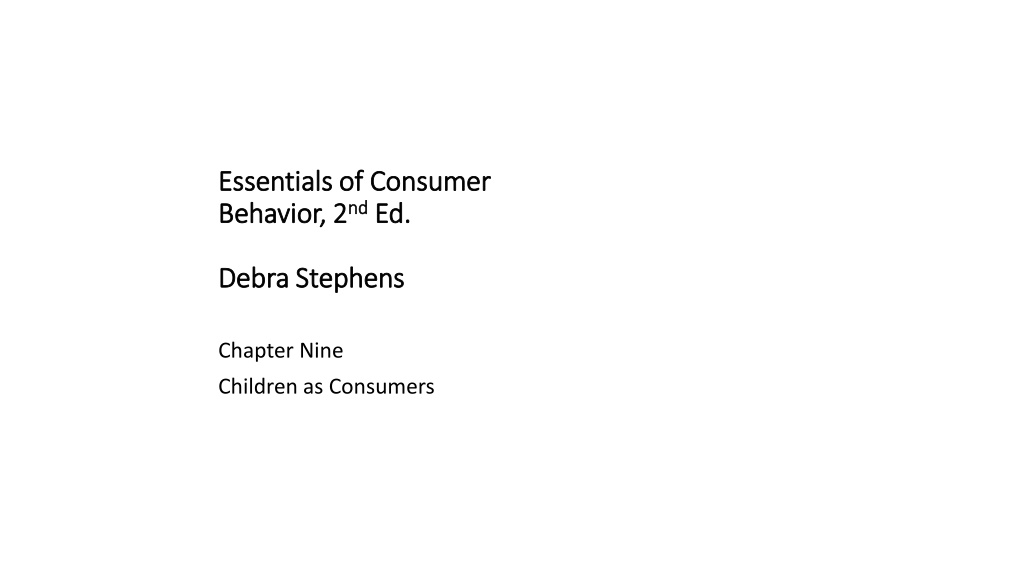Understanding Children as Consumers: Vulnerability and Marketing Strategies
Children are considered vulnerable consumers due to undeveloped executive functions like inhibitory control and cognitive flexibility. They struggle to differentiate between commercials and TV programs, making them susceptible to marketing strategies targeting them with food/beverage products. Marketing tactics include TV ads, apps, and influencers, blurring the line between play and advertising. Understanding how children interpret marketing messages is essential to address the impact of marketing on their attitudes and consumption habits.
Download Presentation

Please find below an Image/Link to download the presentation.
The content on the website is provided AS IS for your information and personal use only. It may not be sold, licensed, or shared on other websites without obtaining consent from the author. Download presentation by click this link. If you encounter any issues during the download, it is possible that the publisher has removed the file from their server.
E N D
Presentation Transcript
Essentials of Consumer Essentials of Consumer Behavior, 2 Behavior, 2nd ndEd. Ed. Debra Stephens Debra Stephens Chapter Nine Children as Consumers
Why are children considered vulnerable consumers? Executive functions not fully developed Working memory Inhibitory control Cognitive flexibility
Undeveloped executive functions Why are children considered vulnerable consumers? Marshmallow test of executive functions Developmentally predictable cognitive biases Piaget's stages of development 3
What kinds of food/beverage products are marketed to children? The most frequently advertised products on children s favorite websites
How are products marketed to children? TV, apps, videos, advergames Marketing tactics: Premiums General Mills and Mega Bloks Promotional characters Toy Story 4 and Kellogg cereal Nutritional information Taste Fun Kidfluencers: Ryan s World
Young children (below age eight) typically cannot distinguish between television programming and commercials. Interactive apps and games blur the line between marketing and play A survey of 5,200 Canadian youth in grades 4 through 11 found that three quarters of them identified brand-centered games as just games and not mainly advertisements. How do children interpret marketing messages? Impact of Social Media on Children's Food Intake Article of interest: Food Marketing Influences Children s Attitudes, Preferences and Consumption: A Systematic Critical Review
Gender in childhood Breaking Gender Stereotypes in the Toy Box How adults' gender-related assumption affect their interactions with kids
self-control goals Imitation of parental behaviors Implementation intentions- if-then statements Imagine child wants to save money for a higher goal (e.g., a new musical instrument) instead of spending it on sweets. Child's implementation intention: If I pass a shelf with sweets in the supermarket, I will ignore them. If I pass a shelf with sweets, I will think about the musical instrument that I will buy. Teaching children self- control technique that work at an implicit level























